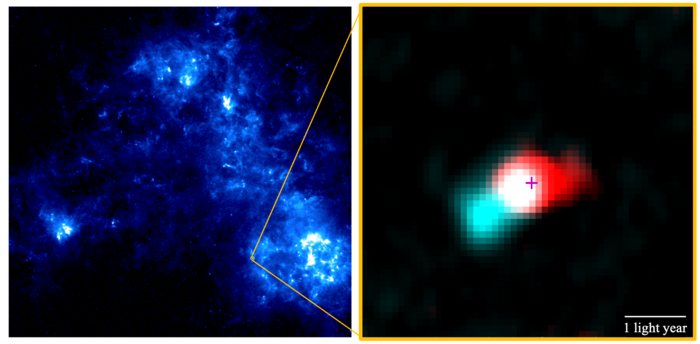‘Birth cry of a baby star’ will change our understanding of the early universe, scientists say
The earliest stars formed before the universe became metallic, but a new study suggests the way stars are born has remained the same for billions of years

Your support helps us to tell the story
From reproductive rights to climate change to Big Tech, The Independent is on the ground when the story is developing. Whether it's investigating the financials of Elon Musk's pro-Trump PAC or producing our latest documentary, 'The A Word', which shines a light on the American women fighting for reproductive rights, we know how important it is to parse out the facts from the messaging.
At such a critical moment in US history, we need reporters on the ground. Your donation allows us to keep sending journalists to speak to both sides of the story.
The Independent is trusted by Americans across the entire political spectrum. And unlike many other quality news outlets, we choose not to lock Americans out of our reporting and analysis with paywalls. We believe quality journalism should be available to everyone, paid for by those who can afford it.
Your support makes all the difference.Compared with the early cosmos, the universe of today is very metal — literally: Heavy elements like iron or platinum, or uranium are produced by the deaths of massive stars, and the earliest stars in the universe formed in the absence of such materials.
That left scientists wondering if the same processes that guide star formation today applied to stars in the ancient past.
Now in a new study published Tuesday in The Astrophysical Journal Letters, researchers from Osaka Metropolitan University in Japan show that at least some aspects of star formation probably are consistent across cosmic time. And they did so by detecting the birth cry of a newborn star in a nearby region of space that serves as a workable proxy for the conditions of the early universe.
The Small Magellanic Cloud is an irregular dwarf galaxy and one of our galaxy’s closest neighbors at around 200,000 light years away, or roughly twice the diameter of our Milky Way. The Small Magellanic Cloud is not just smaller than the Milky Way, it lacks spiral arms and is more of an irregular cloud of gas, dust, and stars.
And those gas, dust and stars lack something else: most elements any heavier than helium, itself just a step above the simplest and most common element, hydrogen. That makes the Small Magellanic cloud an excellent laboratory to study the possible star formation mechanisms prevalent in the early universe before elements heavier than hydrogen or helium could be found in abundance.
The researchers focused on a young star known as Y246 using the Atacama Large Millimeter/submillimeter Array, or Alma, a radio telescope array in Chile. Alma uses a network of 66 antennas working together to create an effective radio wave collecting area of 71,000 square feet, finely tuned to detect light at the border between the radio and infrared portions of the electromagnetic spectrum.
Alma allowed the researchers to detect two jets of material flowing outward from the infant star at more than 33,000 miles per hour.
Such jets are known to slow the rotation of young stars in the contemporary universe, powering their growth, but it was unknown if the same mechanism would hold in the early universe.
So while the new findings do not fully confirm this mechanism played a role in early universe star formation, it does show it plays a role in stars forming in low metal environments quite similar to the early universe, and that the way stars are born may have remained remarkably similar for at least 10 billion years.



Join our commenting forum
Join thought-provoking conversations, follow other Independent readers and see their replies
Comments